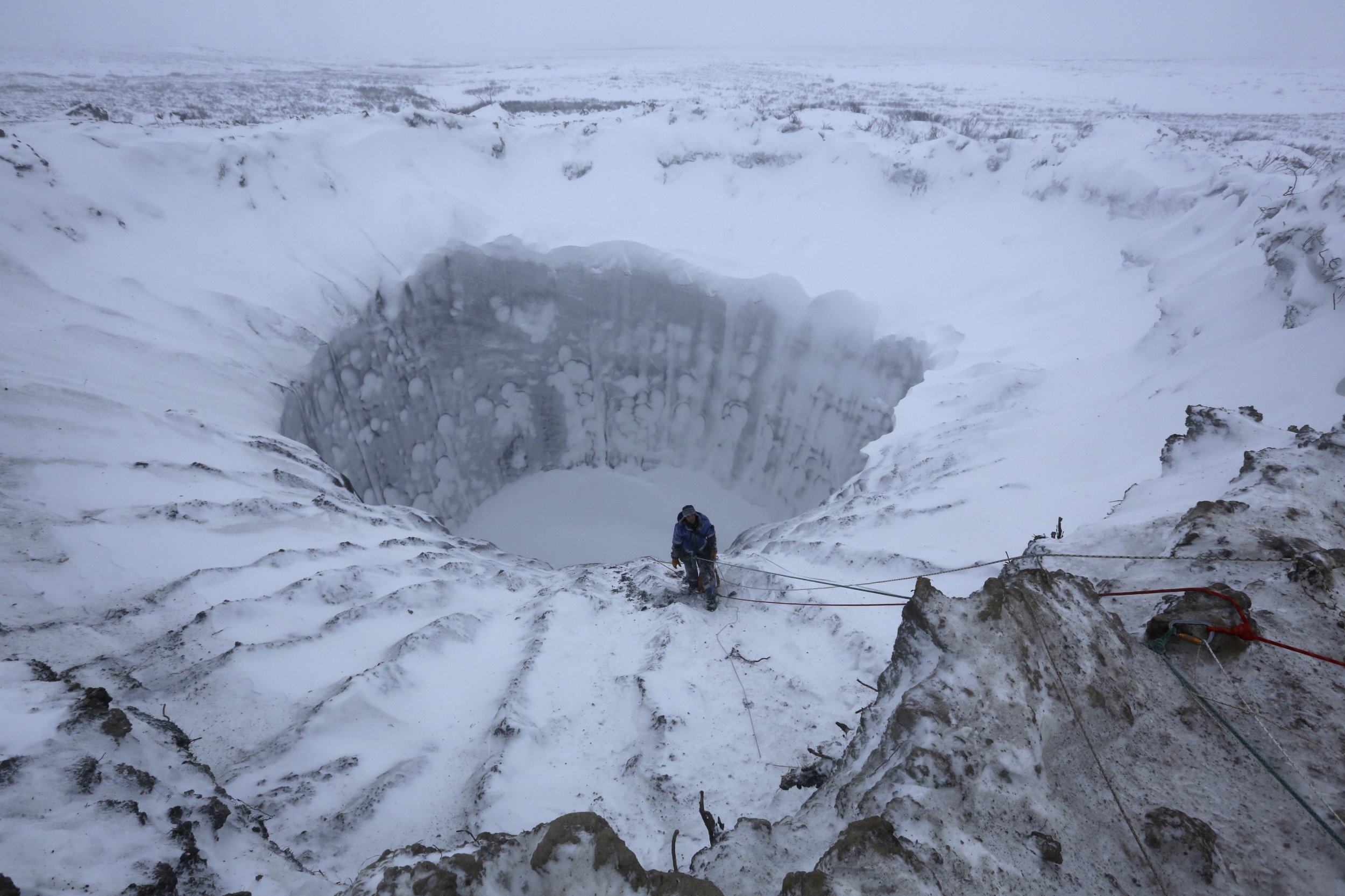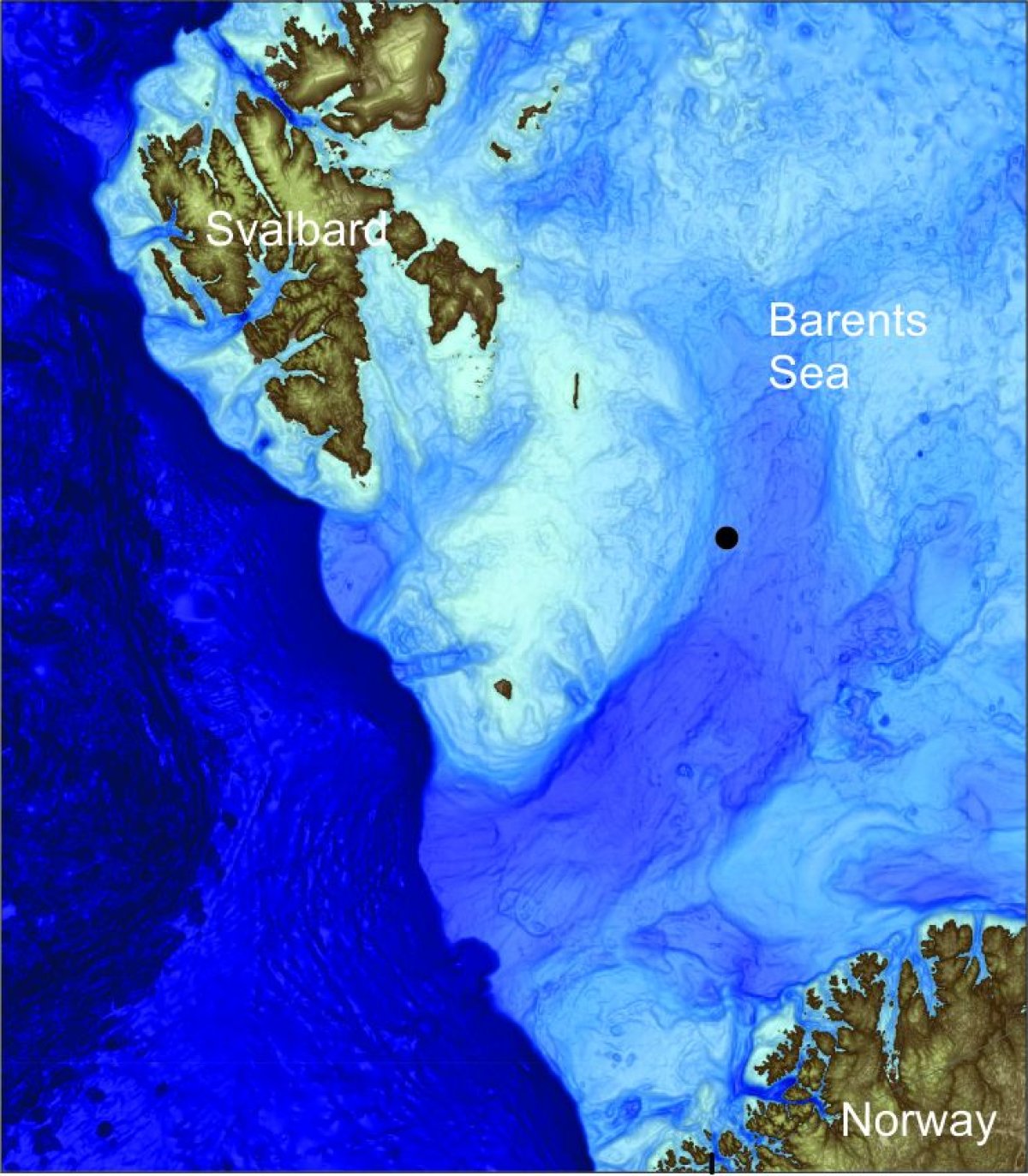
Scientists have discovered hundreds of huge craters—some over 3,000 feet wide—on the seafloor of the Arctic Ocean. The craters in the Barents Sea, north of Norway and Russia, formed through huge mounds full of methane exploding suddenly and catastrophically, thousands of years ago.
Scientists say the discovery could help explain why so many craters have appeared in Siberia over recent decades, with the same processes causing these explosive events.
Researchers led by Karin Andreassen, from the University of Tromsø, the Arctic University of Norway, were investigating a handful of craters that were first discovered in the 1990s. Using state-of-the-art technology, the team has now been able to map the seafloor more accurately—and their findings showed a vast number of craters covering a huge area.

She tells Newsweek: "We realized that there were hundreds of them. And we could also get detailed images of them. We got seismic data showing the structure underneath, and the links with deeper hydrocarbon sources."
The team also got information on levels of methane gas in the water. This allowed them to map out exactly where in the water the gas was located and how it was related to the location of the craters. As a result, they were able to show how the plumbing structure of gas beneath the seafloor caused these craters to form.
In their study, published in Science, the researchers used a model of ice sheet evolution from the end of the last Ice Age, from around 17,000 years ago. At this time, the Barents Sea was covered in an ice sheet, weighing down on the seafloor.
As the ice sheet started to retreat, the methane reservoirs deep below started to become unstable; they began to decompose and migrate upwards and settle at shallower depths—resulting in huge mounds of concentrated methane. "Gas was flowing from below into the upper bedrock just below the ice where the gas was stable," Andreassen says.
"When the load was taken away—as the ice became thinner—there was more and more of the gas hydrate [at shallower depths]. At the end, as the ice sheet finally retreated, the gas would have concentrated into mounds on the seafloor. These were very, very vulnerable to changes in temperature and pressure, so eventually they would collapse," adds Andreassen.

She says that if you watch this happening, you would see a huge mound suddenly release an enormous amount of gas, then collapse. The resulting craters we see today are between 1,000 and 3,200 feet in diameter.
The process, Andreassen says, is thought to be similar to what scientists are recording on Siberia's Yamal Peninsula today. Over the last few decades, huge craters have been appearing. Researchers believe they are formed by thawing permafrost causing the buildup of methane below ground, eventually resulting in an explosive collapse.
"There are many mounds and craters—thousands I would guess—that are the same size in Yamal. The process of first forming into mounds, then releasing gas and collapsing—that's what scientists think is happening in Yamal also. We know from satellite images that areas [where] craters have formed…[were] documented to have been mounds before."
While the researchers do not think there is much risk of mounds forming, then exploding, in the area they studied, similar buildups could be taking place in regions covered in ice where hydrocarbons are present, such as Greenland.
"It is a process we must take into account when we discuss future methane releases," Andreassen says. "The point is methane is being released very slowly, but it can be released very fast and abruptly."

The team has a probe sitting inside one of the craters, where it is collecting geophysical, geochemical and gas data. They plan to collect this after a year, allowing them to better understand the composition of these craters. They hope to look at ice sheet models, as well as changes in permafrost and gas hydrates over the last 11,000 years to understand what is happening on Earth now.
"Our study provides the scientific community with a good past analogue for what may happen to future methane releases in front of contemporary, retreating ice sheets," concluded the statement released with the study.
Uncommon Knowledge
Newsweek is committed to challenging conventional wisdom and finding connections in the search for common ground.
Newsweek is committed to challenging conventional wisdom and finding connections in the search for common ground.
About the writer
Hannah Osborne is Nesweek's Science Editor, based in London, UK. Hannah joined Newsweek in 2017 from IBTimes UK. She is ... Read more
To read how Newsweek uses AI as a newsroom tool, Click here.





